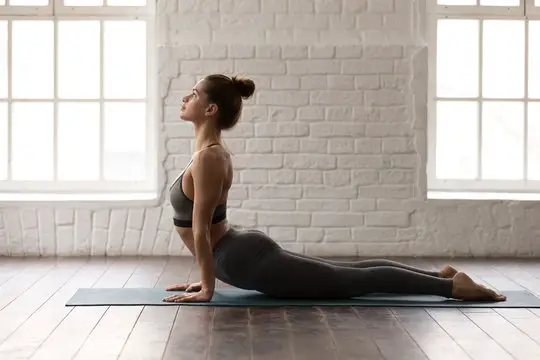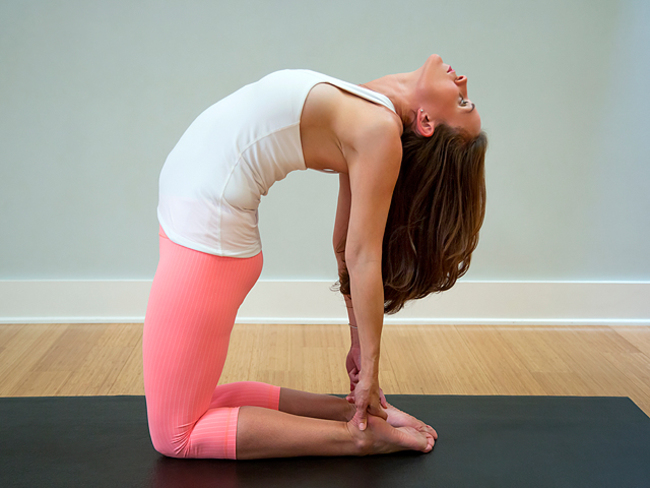Relieve Pain In Right Butt Cheek | Yoga Sciatica Poses
Jump To:
Sciatica meaning, the condition where the sciatic nerve that starts in the lower back is irritated or inflamed. The yoga for sciatica helps ease the muscles around the lower back and sciatic nerve and relieve pain in right butt cheek with yoga sciatica poses. The following 5 yoga for sciatica also helps build strength in the lower back and prevent the condition to worsen.
Sciatica is the debilitating and shooting pain that travels down the length of an inflamed sciatic nerve. It originates in the lower back and extends to the feet.
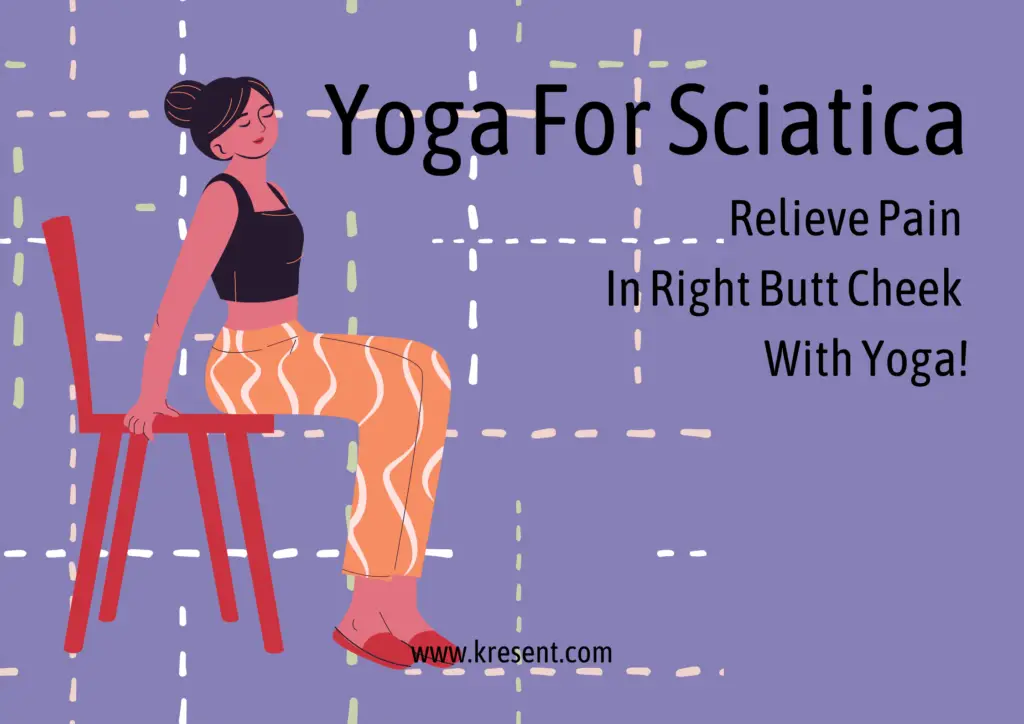
The core muscles that support the lower part of the spine and the hips also need to be strengthened. Adequate hydration and nutrition will reduce inflammation and boost healing of impacted tissues. Daily practice of the following Yoga posture will release and realign the structures in the lower back and legs, which in turn will prevent the further onset of the condition.
Yoga Poses For Sciatica:
These 4 yoga poses for sciatica relieve sciatica and the pain shooting down your hips, butt, and thighs, with these asanas.
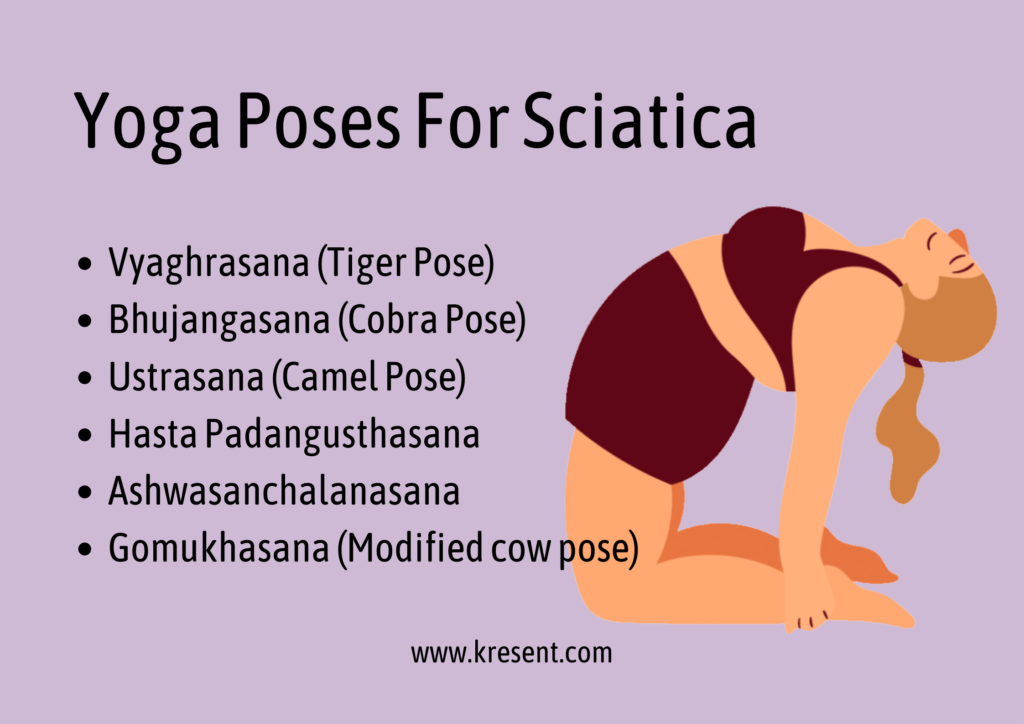
1. Gomukhasana (Modified cow pose):
Regular practice of this pose releases tension all around the hips and improves circulation around the piriformis muscles and sciatic nerve.

Gomukhasana Steps:
- Sit on the floor with legs stretched out and palms close to the hips. (Place a pillow under the hips if you need to.)
- Hold the pose and continue to focus on the breath.
- Inhale; bend the right knee and place the right foot over and across the left leg. Interlock fingers around the right knee and get the right foot closer to the left thigh.
- Exhale; lift the hips off the floor to get both knees stacked on top of each other.
- Inhale; stretch the arms up, palms parallel, lengthen the spine, and as you exhale, hinge forward from the hips and bring the chest close to the right knee.
Make sure the neck is relaxed. Place palms on the floor on either side. The stretch in this pose will be felt along the back of the left leg. Engage the quadriceps to release the hamstring so the sciatica nerve can relax and release tension.
2. Vyaghrasana (Tiger Pose):
To be practiced first thing in the morning or after a bout of pain. You will need 2 yoga mats placed one on top of the other for cushioning.
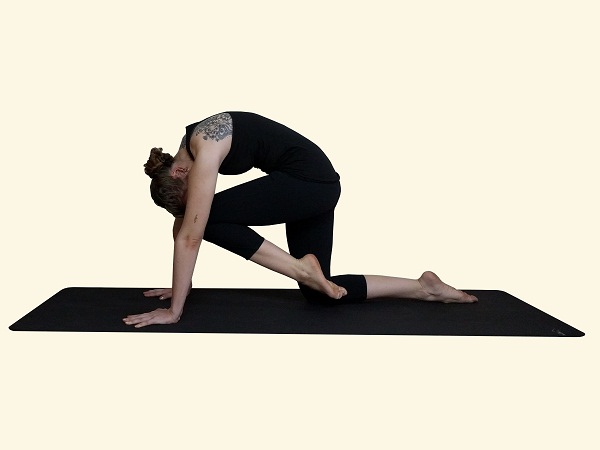
Vyaghrasana Steps:
- Come on all fours with your knees and your hands shoulder-width apart.
- Keep your spine as straight as possible.
- Exhale; hunch your spine and bring your left knee close to your chest.
- Tuck your chin into your chest and draw your belly inwards.
- Keep your arms and the other leg steady so that your body doesn’t sway.
- Inhale; push your chin upwards, arch your back and raise the bent knee upward such that your foot points towards the ceiling.
- This constitutes one round.
Do eight rounds on each side. Relax lying down on your back for two minutes and rest.
4. Ustrasana (Camel Pose):
The camel pose relieves the pain in the lower back. With regular practice, ustrasana helps you strengthen your back and shoulders.
Ustrasana Steps:
- Kneel on the yoga mat and place your hands on the hips. (You may place a cushion below your knees to ease your way into the pose.)
- Your knees should be in line with the shoulders and the sole of your feet should be facing the ceiling.
- Inhale; draw in your tail-bone towards the pubis as if being pulled from the navel.
- Simultaneously, arch your back and slide your palms over your feet till the arms are straight.
- Do not strain or flex your neck but keep it in a neutral position.
- Stay in this posture for a couple of breaths.
- Exhale; slowly come back to the initial pose. Withdraw your hands and bring them back to your hips as you straighten up.
5. Hasta Padangusthasana (Standing Head-To-Toe Pose Variation):
This standing pose yoga for sciatica brings focus on breathing. It activates the core muscles and leg as it is an active hamstring stretch that releases stress around the hip and sciatic nerve.
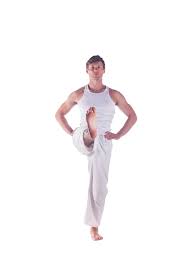
Hasta Padangusthasana Steps:
- Start with standing firmly with legs together on the floor.
- Contract the thigh muscles, roll them slightly inward, lifting the kneecaps.
- Lengthen the tailbone and lift the pubis toward the navel.
- Inhale; bend the elbows and place the palms around the waist. Shift the body weight onto the left leg.
- Bend the right knee at 90-degree angle and bring it towards the chest as fas as you can, engaging the left hip and quadriceps.
- Exhale; hold the back of the right knee with interlocked fingers and stretch it out straight.
Hold the pose for five to ten breaths and bring the right leg down and repeat the same with another leg.
6. Ashwasanchalanasana (Equestrian/Horse Posture):
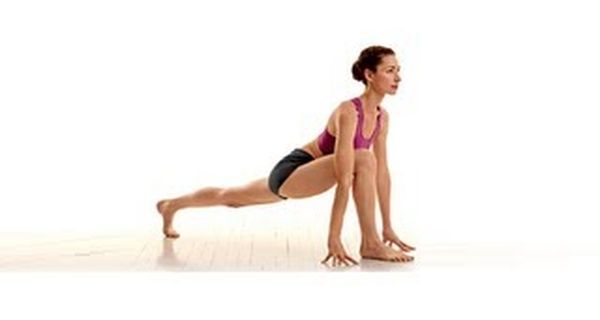
Ashwa Sanchalanasana Steps:
- Stand at the front of a yoga mat with your feet hip-width apart.
- Bend forward from your hips and place your hands on either side of your feet.
- Your knees can bend slightly. Bend the left knee and take your right leg backwards as much as possible. Balance the right leg on the front of your foot (the ball of the foot), keep your knee straight and push your heel backward to a limit that you can manage.
- Gently push your groin towards the floor without bending the right knee. Breathe normally throughout. Now, bring your focus to your torso, open your chest, lengthen your spine and lift your chin up towards the ceiling.
- Hold this posture for eight deep breaths, release the posture and repeat the same for the other leg. Take a break between each side if needed.
What does sciatica pain feel like?
Sciatica pain is typically felt like a constant burning sensation or a shooting pain starting in the lower back or buttock and radiating down the front or back of the thigh and leg and/or feet. Numbness. Sciatica pain may be accompanied by numbness in the back of the leg.
What triggers sciatica?
Sciatica pain is caused by irritation, inflammation, pinching or compression of a nerve in the lower back. The most common cause is a herniated or slipped disk that causes pressure on the nerve root.
Why does sciatica hurt more at night?
Some people with sciatica notice their symptoms get worse when they’re in bed. Lying down can increase pressure on your irritated nerve, especially if you sleep on a soft mattress that causes you to bend your spine while sleeping.
Does sciatica go away on its own?
Sciatica usually goes away on its own, with or without treatment. A doctor can diagnose the cause of sciatica and may prescribe treatment to speed healing. However, sciatica is not a medical emergency, and it is fine to wait to see whether the symptoms resolve on their own before visiting a doctor.
Can sciatica be cured by yoga?
A small 2013 study found yoga poses such as Cobra Pose and Locust Pose to be useful in improving symptoms of sciatica.
How do I get rid of sciatica permanently?
You can heal sciatica permanently by taking the help of physiotherapy. These therapies can have sciatica pain relief exercises to get rid of it completely.
Can stretching make sciatica worse?
In the case of sciatica, improper stretching, overstretching, or excessive stretching can aggravate symptoms.
What happens if sciatica is left untreated?
If left untreated, sciatica can cause permanent nerve damage that worsens back and leg pain.
Should I rest or exercise with sciatica?
While it may seem counterintuitive, exercise is more effective in relieving sciatica pain than bed rest or staying active with daily physical activities.
Can sciatica be cured by yoga?
A gentle yoga practice can be of great help in reducing sciatic pain. Yoga asanas, along with conscious, slow breaths, can provide immense relief to back pain patients and people who have sciatica. It gives them the right support to take care of their pain and prevent serious complications.
What type of yoga is best for sciatica?
Best Yoga Poses for Sciatica Relief
- Knees-to-chest pose. The knees-to-chest pose4 helps stretch out the muscles in your lower back and your piriformis, a pear-shaped muscle located deep in the buttock.
- Cobra pose. The cobra pose5 will work your core and stretch your lower back.
- Cat-cow pose.
- Bridge pose.
Can yoga worsen sciatica?
While Any pose performed too quickly or too deeply can overstress the sciatic nerve and increase symptoms, this is especially true of forward folds. This flexion or bend at the waist can be especially bad for sciatica.
Why does yoga aggravate sciatica?
This happens, says Anna Delury, when yogis develop bad habits in poses. They overly rotate their back leg or twist their feet or square their hips too much, like in Warrior I. This can cause pressure on the lumbar spine and may irritate the sciatic nerves.
Is yoga or pilates better for sciatica?
It is recommended that sciatica sufferers try Pilates, which was originally a practice developed for rehabilitation purposes. The key to movement with sciatica is to be gentle and progress slowly so that you do not overstretch the nerve which will cause greater irritation.
What aggravates the sciatic nerve?
It can be worse when you cough or sneeze, and prolonged sitting can aggravate symptoms. Usually, only one side of your body is affected. Some people also have numbness, tingling, or muscle weakness in the affected leg or foot.
What should I avoid if I have sciatica?
Avoid foods that contain sunflower oil, corn oil, sesame oil, margarine, and partially hydrogenated oil.
Stay away from stressor foods such as caffeine, processed food, soda, refined sugars, and chocolate.
How does cobra pose help sciatica?
Cobra Pose (Bhujangasana) This soothing pose strengthens and stretches your spine, promoting circulation and flexibility. Lie on your stomach with your hands under your shoulders.
What should you not do with sciatica?
11 Things to Avoid if You Have Sciatica
- Avoid Exercises That Stretch Your Hamstrings.
- Avoid Lifting Heavy Weights Before Warming Up.
- Avoid Certain Exercise Machines.
- Avoid Sitting For Longer Than 20 Minutes.
- Avoid Bed Rest.
- Avoid Bending Over.
- Avoid Sitting in the “Wrong” Office Chair.
- Avoid Twisting Your Spine.
How do you release sciatica?
Stretch 1 Lie on your back with both of your knees bent and your feet on the ground. Lift one leg and cross it just above your knee. Hold the thigh of the leg with the foot on the ground and pull up to your chest until you can feel the stretch in your buttocks. Hold for 10 to 30 seconds. Repeat on the opposite side.
What is the best sitting position for sciatica?
Other simple tips to reduce sciatica pain while sitting: Don’t cross your legs. Position feet flat on the floor. Keep hips and knees bent at a 45-degree angle. If your chair has wheels, use them. Instead of twisting and turning your body, use the chair to move your body as a single unit.
How do you permanently cure sciatica?
Although the pain may be severe, sciatica can most often be relieved through physical therapy, chiropractic and massage treatments, improvements in strength and flexibility, and the application of heat and ice packs.
What are the stages of sciatica?
The 3 stages of sciatica recovery Stage 1: Sitting and lying. Stage 2: Gentle exercise. Stage 3: Mobility exercise.
Is running good for sciatica?
Running can help us lose weight, strengthen muscles in your legs, back and abdominal muscles. Becoming stronger in these areas can help alleviate the pain of sciatica and there are other ways by which you can reduce the risk of jogging irritating the sciatic nerve.
